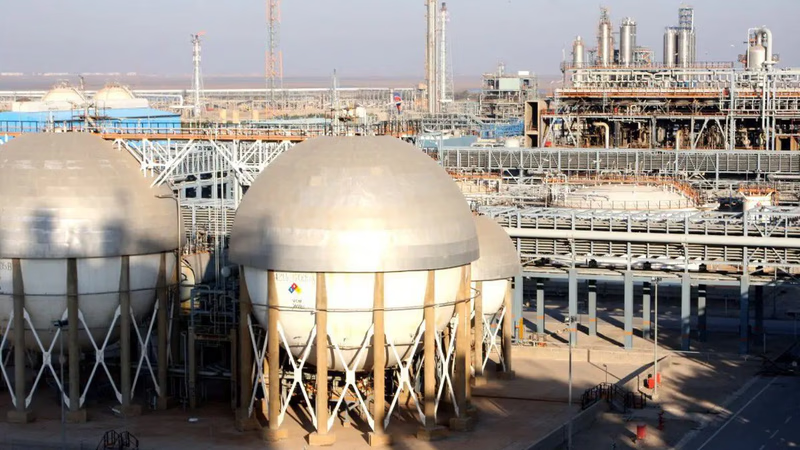
Chlorine in gas, liquid, and solid forms for various applications.
Chlorine is most commonly encountered as a gas. At room temperature and standard atmospheric pressure, chlorine exists as a yellow-green gas (Cl2). It has a pungent odor and is highly reactive. Chlorine can be liquefied under specific conditions. At temperatures below -34.04 degrees Celsius (-29.27 degrees Fahrenheit) and at atmospheric pressure, chlorine gas condenses into a liquid state. Chlorine liquid is amber in color and has a density greater than that of water. Chlorine can also form a solid state under very low temperatures. At temperatures below -101.5 degrees Celsius (-150.7 degrees Fahrenheit), chlorine gas solidifies into a yellow crystalline solid. However, chlorine's solid state is less common and not typically encountered under normal conditions.
Chlorine gas is the most commonly used form due to its ease of handling and application. It is readily available and can be easily distributed and controlled. Chlorine gas is commonly used for water disinfection, pool sanitation, and various industrial processes. However, it requires proper safety measures and careful handling due to its toxic and reactive nature. Chlorine liquid has a higher density than its gaseous form and can be useful in certain applications where a higher concentration of chlorine is required. It can be stored and transported in liquid containers. However, handling liquid chlorine requires additional precautions, as it can be corrosive and pose safety risks. Chlorine as a solid is less commonly encountered and has limited practical applications. It is typically used in specialized laboratories or research settings. Handling solid chlorine requires extremely low temperatures and specialized equipment.
- Solid chlorine
Solid chlorine is mostly in powder form and is used to disinfect kitchens, bathrooms, toilets and doing laundry in laundries. This type is also suitable and used for water purification and disinfection, as well as disinfection of swimming pools and water parks. - Liquid chlorine
Liquid chlorine is the most widely used form of chlorine and is transported by special tanks in iron cylinders. This type is mostly used to disinfect swimming pools. Liquid chlorine enters the pool water little by little using injection pumps and eliminates all bacteria and germs inside it.
One of the disadvantages liquid form of this substance is that it loses its properties over a long period of time and is difficult to maintain. It also reacts quickly with acids and most chemicals. - Chlorine Gas
Chlorine gas, if combined with water, increases its acidity. Chlorine in the form of gas is stored and used in pressurized storage tanks and capsules. Each capsule containing chlorine gas is used up to six months, so it is very cost-effective.
One of the disadvantages of this type of chlorine is that there is a possibility of leakage from the capsule and this is very dangerous. To carry chlorine-containing capsules, an Overhead crane and appropriate equipment must be used, and also storage tanks must be stored in a special room equipped with a leak detector. Chlorine as a solid is not encountered in regular conditions but can exist at extremely low temperatures and is a yellow crystalline substance formed when chlorine gas is cooled below its freezing point (-101.5 degrees Celsius or -150.7 degrees Fahrenheit). It is highly reactive and unstable, requiring specialized equipment and controlled environments for handling and is typically utilized in research laboratories or specific experimental setups. Due to its rarity and challenges associated with handling, solid chlorine is not commonly used in practical applications.
Chlorine liquid is the result of condensing chlorine gas under specific temperature and pressure conditions and appears as an amber-colored liquid with a higher density than water. Liquid chlorine is commonly used in large-scale applications where higher concentrations of chlorine are required, such as water treatment plants and industrial settings and is typically stored and transported in sealed containers made of materials resistant to chlorine's corrosive properties. Specialized equipment, such as storage tanks and pumps, is necessary for handling liquid chlorine safely.
Chlorine gas (Cl2) is the most common and widely used form of chlorine and is typically stored and transported in pressurized cylinders or tanks. Chlorine gas is highly reactive and can readily mix with air, making it potentially hazardous if not handled properly and has a characteristic pungent odor, detectable even at low concentrations. Chlorine gas is used for water disinfection, pool sanitation, industrial processes, and chemical manufacturing. Safety precautions, such as proper ventilation and the use of personal protective equipment, are essential when working with chlorine gas.
-
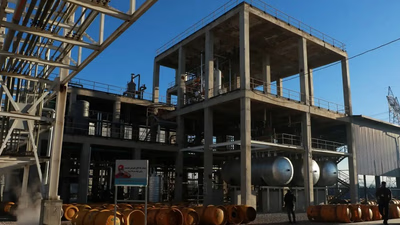
Chlorine prices in West Asia are significantly influenced by the availability and cost of natural gas, a primary feedstock for production. Countries like Saudi Arabia, Qatar, and the UAE benefit from abundant natural gas reserves, allowing them to produce chlorine at competitive prices. This capability positions them as key exporters in the global market, where their export volumes can affect supply-demand dynamics and pricing. The price of chlorine is generally reasonable, but quality varies; high-quality chlorine is white and has a gas-like smell, while lower quality is yellowish. Market conditions such as currency exchange rates, trade policies, and tariffs also play crucial roles in determining chlorine prices globally. The relationship between West Asian chlorine prices and global markets is complex and dynamic, influenced by demand from major consuming regions like North America and Europe. As West Asian producers leverage their cost advantages, they may exert downward pressure on global prices if supply outpaces demand. Overall, while regional factors are significant, broader economic trends and industry shifts also shape the pricing landscape for chlorine.
-

Chlorine exists primarily as a gas, characterized by its yellow-green color and pungent odor. It can be liquefied at temperatures below -34. 04°C and solidified at temperatures below -101. 5°C, although the solid form is rare and mainly used in specialized settings. Chlorine gas is widely utilized for water disinfection, pool sanitation, and various industrial applications due to its ease of handling. Liquid chlorine, which is amber-colored and denser than water, is commonly used in larger-scale operations like water treatment plants but requires careful handling due to its corrosive nature. Solid chlorine, typically found in powder form, serves specific purposes such as disinfecting surfaces and water purification but is less common in everyday use. Each form of chlorine has distinct advantages and safety considerations; for instance, while chlorine gas is cost-effective with a six-month usage period per capsule, it poses risks of leakage if not stored properly.
Liquid chlorine"s effectiveness diminishes over time and reacts quickly with other chemicals. Overall, understanding the properties and applications of each chlorine state is crucial for safe handling and effective use in various industries. "
-
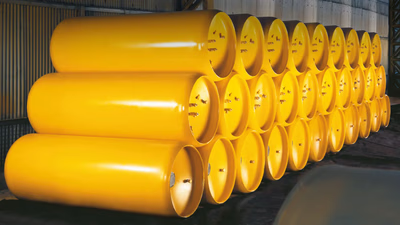
Chlorine plays a crucial role in various applications, primarily in water purification and disinfection. It effectively eliminates bacteria, viruses, and other microorganisms, ensuring safe drinking water and preventing waterborne diseases. In swimming pools, chlorine maintains hygiene by controlling algae and microbial growth. Additionally, chlorine compounds like sodium hypochlorite serve as bleaching agents across industries, including textiles and paper production. Chlorine is also integral in pharmaceuticals, contributing to the synthesis of antibiotics and antiseptics. Its versatility extends to odor control in waste management and the production of everyday items such as plastics and solvents. Despite its benefits, chlorine must be handled with care due to its toxic nature; proper safety measures are essential when working with it. The chemical"s ability to produce hypochlorous acid enhances its effectiveness in attacking pathogens quickly. Overall, chlorine"s diverse applications underscore its importance in industrial processes and public health.
-
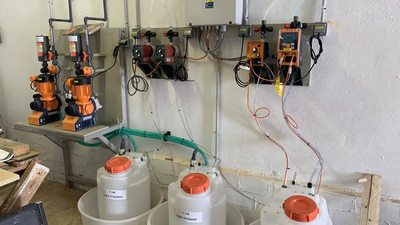
The Middle East is a key player in chlorine production, leveraging its abundant natural gas resources as a primary feedstock. Countries like Saudi Arabia and the UAE have established large-scale production facilities that cater to both domestic and international markets. The region"s strategic location enhances its export capabilities, facilitating access to global markets. Government support through policies and incentives has further bolstered the chemical industry, encouraging foreign investment and technology transfer. Rapid urbanization and industrial growth within the region have increased demand for chlorine-based products, including those used in water treatment and manufacturing. Regional cooperation among West Asian countries optimizes resources for efficient chlorine production, with nations like Iran and Qatar also contributing significantly to the market. The development of integrated petrochemical complexes supports the entire chemical value chain, enhancing competitiveness while diversifying economies away from oil dependency. As these countries continue to invest in their chemical sectors, they aim to create new revenue streams and employment opportunities. "
-
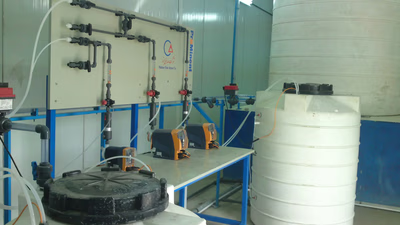
Chlorine, a yellow-green gas with the symbol Cl and atomic number 17, is a highly reactive halogen known for its strong oxidizing properties. It exists as diatomic molecules (Cl2) and has a pungent odor similar to bleach. Chlorine is widely utilized for its disinfectant capabilities, effectively eliminating bacteria, viruses, and other microorganisms in water treatment processes, swimming pools, and surface sanitation. Its compounds, such as sodium hypochlorite, serve as household cleaners. Beyond disinfection, chlorine plays a crucial role in manufacturing various products including plastics, solvents, pesticides, and pharmaceuticals. Despite its beneficial applications, chlorine must be handled with care due to its toxicity when inhaled or ingested in high concentrations. Chlorine"s significance extends to the production of safe drinking water and the synthesis of essential chemicals in industries. Its discovery dates back to 1774 by Carl Wilhelm Scheele and was named by Sir Humphry Davy in 1810. Chlorine"s versatility makes it an indispensable element across multiple sectors.





